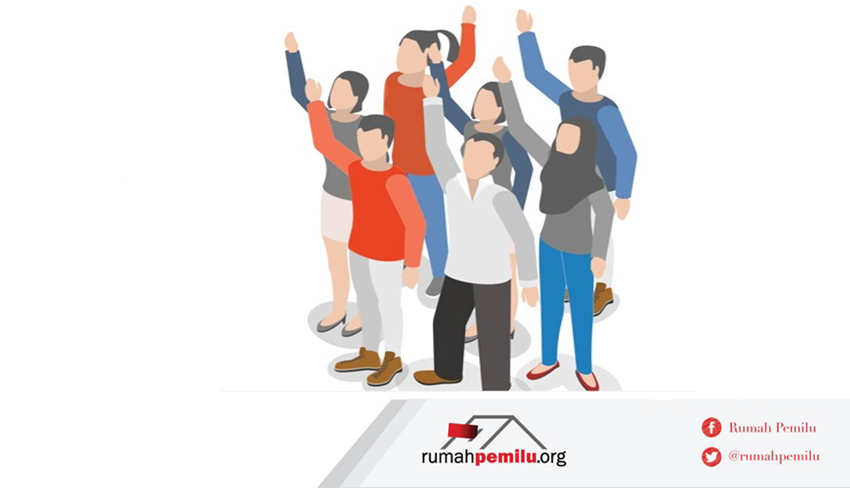Revision of Law 8/2015 on regional head elections urged to be done before 2017 election. Based on the meeting held between the Minister of Home Affairs and Commission II of the House of Representatives on Monday (18/1) at the MPR / DPR / DPD building, government and Parliament agreed to speed up the revision process to be completed before 2017 election phase begins.
As a Law that was born prematurely, it is appropriate to revise Law 8/2015. Given that there are some fundamental problems which in practice has direct implications on the process and quality of the delivery of the election itself. However the question is what are strategic matters that need to be done in the revision of the legal framework organizing the simultaneous election?
Mapping the Issues
Reflecting on the 2015 simultaneous election there were five issues arising from the Law 8/2015. First, imposing the budget to organize the regional election to regional budget (APBD) was capable of inhibiting the process of the elections. Constraints of budgeting process and the search for Regional Loan and Grant Document (NPHD) which were due to the end of the financial year, up to a conflict of interest between the head of the region associated with the process of organizing elections. This caused uncertainty budgets for several areas that would carry out the 2015 elections. Even before the vote on December 9 there were some regions with budget constraints.
Second, nomination process turned into an endless polemic and led to the postponement of the elections in five regions less than 24 hours before the vote day; they are Central Kalimantan province, Simalungun Regency, Pematangsiantar, Manado, and Fak-Fak Regency. It was caused by a prolonged nomination dispute and many institution interventions namely Election Oversight Committee, Election Oversight Body, Honorary Council of Election Management Bodies (DKPP), Administrative High Court (PTTUN) and the Supreme Court (MA).
Third, there were four aspects of campaign funded by the state (electronic/printed advertisement, public debate, props, and distribution of props) aimed at reducing political cost taken out by the candidates and creating equal playing battle field or equal competition. A wave of criticism was regarded as one of the causes of the decreasing number of political participation of the community to go to the polls. Besides, existence of the public debate was still a mere ceremonial of minimal public information. Even worse, Law 8/2015 prohibits the practice of money politics in the campaign but does not regulate the provision of sanctions for prospective regional heads found guilty of money politics.
Fourth, the accuracy of the voter list remains a classic problem in any election, including the 2015 election. However, the one which is interesting is the difference of political treatment of Law 8/2015 and Law 42/2008 on presidential elections. If on the presidential election law participants with mental disabilities/ psychosocial are allowed casting their votes, but on the election law they are not allowed. In fact, if reviewed from the principles and its stages, there are no differences between regional election and presidential election. Fifth, there was provision margin for each regional head applying for dispute of election results to the Constitutional Court. This is not in line with the purpose of the election itself which is to create justice for all parties, seek truth and material justice to problems that occurred in the elections.
Lastly, design of simultaneous election today is precisely on the contrary to the purpose for organizing the effectiveness of local government. This is evidenced from the regional head from 2015 simultaneous election which are not able to gain support of the major political parties in Parliament. On the other hand, if measured from the effective number parliament parties index (ENPP), regional parliaments scored seven on average means that there are seven relevant political parties that have power to influence policy and tends to be fragmented. Surely it will complicate the work of elected regional heads to realize the promise, vision and mission, and programs offered during campaign.
Strategic Revision
Amid these conditions strategic clauses revision is not only reviewed based on how to organize the election, but on the results as well. It is then important and urgent to be done comprehensively by: First, restoring the election funding from regional budget to state budget to create a budget certainty for the area that will hold the elections, as well as make government easier to control the distribution of the budget process. Second is by avoiding recurrence of cases of election delays caused by disputes nomination process. It is necessary to design the judicial nomination dispute focused on a single organizing institution only. Third is minimizing the occurrence of the phenomenon of a single candidate, despite the decision of the Court Number 100 / PUU-XIII / 2015 which still allows regions to hold elections although only followed by one pair of candidate. Easing the terms of support for independent candidates and political parties can be a significant way to minimize the phenomenon.
Fourth, cost of regional campaign of regional head candidates are still funded by the state but limited only on electronic and printed advertisements as well as public debate. Meanwhile, manufacturing of props and its distribution is charged to the pairs of candidates and political parties in which its installation location is organized by the election organizer. Moreover, public debate of regional head does not need to be limited at provincial level or the district / city, but it can be held at sub-district/village which does not need to involve the candidate. It can be done by campaign team because its basic purpose is to explore the vision, mission and programs offered.
Fifth, the revision of Law No 8/2015 must include provision of sanctions for each participant convicted of money politics. Sixth, in order to create effective and accountable local governance, it is necessary to rearrange the design of time delivery of simultaneous election, by creating a concurrent election. This means that simultaneous elections are held simultaneously with provincial legislative and district legislative elections which are able to create coalition between political parties and regional head bearer since the beginning and to support collar effect which is to choose bearer of regional heads on regional legislative election. It is hoped that regional heads are able to win the support of the majority of political parties in Regional House of Representatives (DPRD). []
HEROIK M. PRATAMA
A Political Researcher of Association for Elections and Democracy (Perludem)
Translated by SL
 Rumah Pemilu Indonesia Election Portal
Rumah Pemilu Indonesia Election Portal




